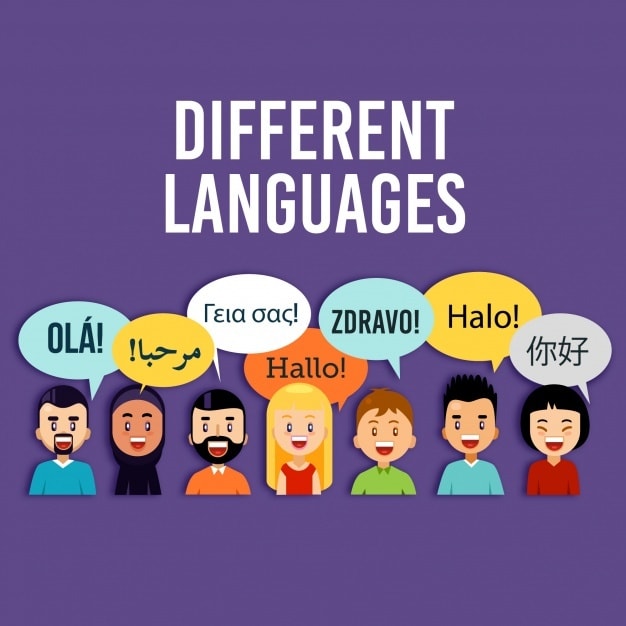Body language plays a critical role in communication, often conveying more meaning than verbal expressions alone.
In the context of cross-cultural interactions, it is essential to understand the nuances of gestures, facial expressions, and personal space. Different cultures interpret body language in various ways, which can result in misunderstandings if not approached with care.
This article examines the significance of body language, its cultural variations, and practical strategies for improving communication across diverse backgrounds. It provides insights on how to decode these nonverbal cues to foster better connections and mitigate potential misinterpretations.
What is Body Language?
.jpg_00.jpeg)
Body language encompasses the nonverbal signals utilized in communication, including a wide range of behaviors such as facial expressions, gestures, posture, and eye contact. It plays a critical role in conveying implicit messages and emotions, often serving to complement or contradict verbal communication.
Understanding body language entails the interpretation of various nonverbal cues, which may be influenced by social norms and cultural practices. This form of communication is essential in interpersonal relationships, offering valuable insights into how individuals perceive and respond to one another in diverse contexts.
By analyzing these signals, one can enhance intercultural competence and empathy.
Why is Body Language Important in Communication?
Body language plays a critical role in communication, as it significantly affects how messages are received and interpreted, often conveying more information than spoken words.
Nonverbal cues, including gestures, posture, and eye contact, can enhance verbal communication, establish rapport, and foster emotional connections between individuals.
Recognizing the significance of body language is essential for effective social interactions, particularly in diverse cultural contexts where communication styles may vary.
By being mindful of body signals and adapting nonverbal behavior accordingly, individuals can navigate social situations more effectively and mitigate communication barriers.
How Does Body Language Differ Across Cultures?
Body language varies significantly across cultures, influencing the interpretation and understanding of nonverbal communication. Cultural differences in gestures, eye contact, personal space, and facial expressions can result in misinterpretations and misunderstandings during social interactions.
For example, a gesture deemed polite in one culture may be perceived as offensive in another, underscoring the necessity of cultural sensitivity in intercultural communication.
Recognizing these variations is crucial for cultivating intercultural competence and promoting effective communication, particularly in a globalized context where diverse cultural identities frequently engage with one another.
1. Gestures
Gestures constitute a fundamental element of body language, serving as powerful nonverbal communication tools that convey meaning and emotion. The interpretation of gestures can vary significantly across cultures, which may lead to misunderstandings if not contextualized appropriately.
For instance, the act of placing the index finger to the lips is widely understood to signify ‘silence’ in many Western countries; however, in certain regions of South America, it may indicate a need for caution or alertness. Similarly, the ‘OK’ sign, created by forming a circle with the thumb and index finger, is generally deemed acceptable in North America, yet may be regarded as vulgar in countries such as Brazil or Turkey.
These variations underscore the importance of cultural awareness in communication. Recognizing and respecting the diversity of gestures can facilitate more effective interactions, prevent unintentional offense, and ultimately enhance relationships in an increasingly interconnected world.
2. Facial Expressions
Facial expressions are among the most recognizable forms of nonverbal communication, frequently offering valuable insights into an individual’s emotional state and intentions. While many facial expressions, such as smiles signifying happiness and frowns indicating sadness, are universally understood, cultural nuances can significantly influence their interpretation.
Recognizing these differences is crucial for promoting empathy and effective communication across diverse cultural contexts, as misinterpretation of facial cues can result in misunderstandings during social interactions.
Research conducted by Paul Ekman indicates that although certain emotions are associated with specific facial expressions that are prevalent across cultures, some expressions may convey different meanings depending on an individual’s cultural background. For example, in certain Asian cultures, a lack of eye contact and subtle facial movements may signify respect, whereas, in Western cultures, it may be perceived as dishonesty or disinterest.
Understanding these variations is essential for fostering cross-cultural relationships, as individuals who can accurately interpret these signals are better equipped to navigate complex social situations with greater success. Theories such as the Facilitated Communication Theory underscore the importance of recognizing and adapting to diverse expressions, which can be pivotal in enhancing interpersonal interactions.
3. Eye Contact
.jpg_01.jpeg)
Eye contact constitutes a fundamental aspect of nonverbal communication, often regarded as an indicator of confidence, respect, and engagement during interactions. The appropriateness and interpretation of eye contact can vary significantly across different cultures, where diverse social norms dictate the manner and frequency of eye contact.
In some cultures, direct eye contact is perceived as a sign of honesty, while in others, it may be viewed as disrespectful or confrontational. Recognizing these cultural differences in eye contact is essential for effective intercultural communication and for fostering respectful interpersonal relationships.
For example, in many Western cultures, such as the United States, maintaining eye contact while speaking is typically considered a marker of sincerity and attentiveness. In contrast, in certain Asian cultures, prolonged eye contact may be interpreted as a challenge to authority or a sign of disrespect, especially towards elders.
Therefore, it is imperative for individuals engaging in multicultural interactions to be aware of these nuances. To enhance communication, one may adopt a softer gaze or alternate between looking at the individual’s face and other areas when interacting with individuals from cultures where direct eye contact is less customary. This adaptability can create a sense of comfort and demonstrate respect for differing cultural values.
4. Personal Space
Personal space is a fundamental aspect of nonverbal communication, defined by the physical distance individuals maintain during interactions. The concept of personal space varies significantly across cultures, influencing social interactions and communication styles.
In certain cultures, close proximity is regarded as welcoming, while in others, it may be perceived as intrusive or disrespectful. Understanding these cultural differences in proxemics is essential for fostering comfortable and effective communication experiences, particularly in diverse environments.
For example, in many Mediterranean and Latin American cultures, a closer physical presence is often interpreted as a sign of warmth and engagement. Conversely, individuals from North American and Northern European backgrounds may feel uncomfortable when someone stands too close.
Violating personal space boundaries can lead to discomfort, misunderstandings, and even conflict in communication. Therefore, it is imperative for individuals to adapt their approach to align with the comfort levels established by their conversational partners.
This adaptability not only enhances interpersonal relationships but also demonstrates respect for cultural differences, paving the way for more meaningful exchanges across diverse contexts.
The Impact of Misreading Body Language in Cross-Cultural Communication
Misinterpretation of body language can substantially affect cross-cultural communication, resulting in misunderstandings and misinterpretations that may impede effective interactions.
When individuals do not accurately interpret nonverbal cues, such as gestures or facial expressions, it can create barriers to communication and perpetuate negative stereotypes.
Awareness of cultural differences in body language is essential for minimizing the risk of misinterpretation and fostering empathy in social interactions. By cultivating cultural fluency, individuals can enhance their communication skills and decrease the likelihood of conflict in diverse environments.
1. Stereotyping and Prejudice
Stereotyping and prejudice frequently arise from misinterpretations of body language, wherein individuals may depend on cultural stereotypes to evaluate others’ intentions or emotions based on nonverbal cues. This reliance on preconceived notions can result in considerable intercultural misunderstandings, further exacerbating social tensions and conflicts.
By acknowledging and addressing these biases, individuals can promote more inclusive communication practices, thereby enhancing cultural identity and awareness in their interactions.
The intricacies of nonverbal communication are multifaceted, involving gestures, facial expressions, and other nonverbal cues, and vary significantly across different cultural contexts, which increases the likelihood of misunderstandings. For instance, a gesture that signifies friendliness in one culture may be perceived as aggression in another, highlighting the importance of understanding cultural differences and social norms.
Such misinterpretations can reinforce existing stereotypes, creating a cycle of prejudice that obstructs genuine social connections and demonstrates the role of culture in shaping social identity and interaction patterns.
To mitigate these issues, individuals can implement strategies such as active listening, seeking clarification through verbal communication, and engaging in intercultural dialogue that emphasizes empathy, cultural awareness, and understanding.
To dismantle communication barriers, it is crucial to cultivate an awareness of one’s own body language, including proxemics and kinesics, and the varying interpretations it may elicit in others, thereby enhancing intercultural competence.
2. Misunderstandings and Offense
Misunderstandings in body language can result in unintentional offense, as individuals may misinterpret nonverbal cues, leading to hurt feelings or conflict. For instance, a gesture that is perceived as friendly in one culture may be regarded as disrespectful in another, due to differing cultural symbols and etiquette, resulting in negative consequences for social interactions.
Therefore, cultivating empathy, cultural sensitivity, and cultural awareness is essential for effectively navigating these complexities, enabling individuals to engage more respectfully with diverse populations and fostering mutual respect.
Consider a scenario in which an individual from the United States smiles and makes direct eye contact during a conversation, behaviors that typically signify confidence and openness in American culture. However, this same conduct may be viewed as an invasion of personal space or insensitivity in cultures that prioritize modesty, such as certain Asian societies, illustrating the importance of interpreting gestures and proxemics within their cultural context.
Similarly, a thumbs-up gesture, which generally indicates approval in Western contexts, might be interpreted as an offensive insult in some regions of the Middle East, showcasing the complex dynamics of cultural interpretation and signaling.
Recognizing these nuanced differences allows individuals to adapt their communication styles, enhancing intercultural competence and fostering a more inclusive environment in which misunderstandings are minimized and genuine connections can thrive.
3. Ineffective Communication
.jpg_10.jpeg)
Ineffective communication frequently stems from a lack of understanding of nonverbal cues, such as gestures and body posture, which can impede successful exchanges, particularly in cross-cultural contexts. When individuals are unaware of the cultural variations in body language, they may encounter difficulties in conveying their messages accurately, resulting in confusion and frustration.
By acknowledging these potential communication barriers and fostering empathy, individuals can enhance their communication strategies, thereby promoting better understanding and connection during intercultural interactions.
This challenge is further accentuated by the fact that gestures, eye contact, and personal space, key components of proxemics and haptics, can possess entirely different meanings across various cultures. For instance, while a smile may signify friendliness in one culture, it could convey embarrassment or discomfort in another, highlighting the role of cultural context cues in shaping perception.
To bridge these communication gaps, it is essential to cultivate cultural awareness by actively engaging in the study of the communication styles of others, demonstrating patience, and posing clarifying questions when uncertainty arises, thereby enhancing communication effectiveness.
Embracing flexibility in communication methods—such as adjusting tone, body language, or even incorporating new phrases—can significantly enhance dialogues, making them more effective and enriching for all parties involved, especially in high-context and low-context cultures.
How to Improve Cross-Cultural Communication through Body Language
Enhancing cross-cultural communication through body language necessitates a deliberate commitment to understanding and adapting to the various cultural norms and societal values that shape nonverbal interactions.
By increasing cultural awareness and actively observing nonverbal cues, such as gestures and facial expressions, individuals can improve their communication practices and cultivate more meaningful connections.
Moreover, engaging in active listening and seeking clarification on nonverbal signals can help reduce misunderstandings and foster greater empathy in intercultural exchanges, thereby enhancing social interaction.
1. Educate Yourself on Different Cultural Norms
Educating oneself about various cultural norms is essential for effective cross-cultural communication, as it provides valuable insight into differing interpretations of body language and social practices. Understanding these cultural differences enables individuals to navigate interactions with greater respect and appropriateness, thereby fostering an environment of cultural sensitivity, awareness of diversity, and awareness of biases.
This knowledge not only enhances communication styles but also promotes positive relationships within diverse communities, supporting intercultural relationships and mutual respect.
To fully comprehend these nuances, individuals may engage with various resources, such as:
- Workshops
- Seminars
- Online courses focused on intercultural communication
Reading literature on cultural anthropology or psychology can also provide valuable perspectives. Participation in cultural exchanges or community events offers opportunities to observe and practice nonverbal cues in real-life contexts, thereby enhancing cultural integration and awareness of biases.
Furthermore, utilizing digital platforms, such as podcasts and webinars, facilitates continuous learning and exposure to different viewpoints, enriching one’s understanding of how body language is interpreted across distinct cultural settings, thereby enhancing cultural intelligence and communicative competence.
2. Be Mindful of Your Own Body Language
Being mindful of one’s own body language is essential in cross-cultural interactions, as it directly affects how messages are perceived by others. Self-awareness of nonverbal cues—such as gestures, facial expressions, and posture—enables individuals to communicate more effectively and align their body language with their verbal messages, thereby enhancing emotional intelligence and communication dynamics.
This mindfulness also enhances the ability to observe and interpret the body language of individuals from different cultural backgrounds, leading to improved understanding, rapport building, and relationship dynamics.
To cultivate this awareness, individuals may engage in self-reflection following conversations to evaluate their own nonverbal signals and consider how these may have been interpreted by others, thereby enhancing communication skills and decoding signals.
Employing simple techniques, such as taking a moment to breathe deeply before speaking or practicing active listening, can significantly enhance body language. Maintaining eye contact demonstrates attentiveness, while an open posture can foster engagement and trust.
By concentrating on these elements, individuals not only enhance their interactions but also develop a deeper empathy for the nonverbal expressions of others, thereby enriching the overall communicative experience.
3. Use Verbal Communication to Clarify Nonverbal Cues
Utilizing verbal communication to clarify nonverbal cues is essential in cross-cultural contexts, where misinterpretations can easily arise. By explicitly articulating the intentions or emotions underlying gestures and facial expressions, individuals can significantly reduce the likelihood of misunderstandings and enhance the effectiveness of communication, thereby supporting communication frameworks and processes.
This approach not only reinforces the message being conveyed but also demonstrates a commitment to understanding and respecting cultural differences, thereby enhancing intercultural competence and mutual respect.
For example, in a business meeting with participants from diverse backgrounds, a nod may be interpreted as agreement by one individual, while another may perceive it as mere acknowledgment rather than consent. If one participant takes the initiative to articulate their thoughts by stating, “I agree with your proposal,” this helps eliminate any ambiguity.
Similarly, during social interactions, a smile may convey friendliness in one culture but signal discomfort in another. When individuals proactively express their feelings verbally, they facilitate clearer conversations, bridging gaps that might otherwise lead to confusion and fostering stronger connections across cultures, thereby enhancing intercultural dialogue and communication effectiveness.
4. Practice Active Listening
.jpg_11.jpeg)
Practicing active listening is a crucial skill for enhancing cross-cultural communication, as it entails fully engaging with the speaker while being attentive to both verbal and nonverbal cues. This skill not only cultivates empathy but also enables individuals to gain a deeper understanding of the cultural context behind the messages being conveyed, thereby enhancing intercultural competence and communication strategies.
By demonstrating genuine interest and attentiveness, one can foster a more inclusive and respectful communication environment, thereby minimizing the risk of misinterpretation and enhancing relationship dynamics and social identity.
Techniques such as paraphrasing and providing thoughtful feedback are essential components of this process. Paraphrasing allows listeners to clarify their understanding and accurately reflect the speaker’s thoughts, while feedback ensures that messages are received as intended, thereby enhancing communicative competence and encoding and decoding.
Equally important is the ability to interpret body language, as nonverbal signals can significantly enhance comprehension, revealing emotions and intentions that words alone may not articulate, thereby supporting multimodal communication and communication research.
By refining these active listening skills, individuals can effectively bridge cultural gaps, leading to more meaningful interactions and fostering a sense of connection that transcends language barriers, thereby supporting cultural adaptation and intercultural training.
Frequently Asked Questions
What is the role of body language in cross-cultural communication?
Body language plays a crucial role in cross-cultural communication as it can convey a variety of messages and emotions without the use of words, highlighting the importance of decoding signals and cultural nuances in international communication.
How does body language differ across cultures?
Body language can vary greatly across cultures, with different gestures, facial expressions, and postures having different meanings and interpretations, reflecting societal values and interaction styles.
What are some examples of body language differences in cross-cultural communication?
Some examples of body language differences in cross-cultural communication include varying levels of eye contact, hand gestures, and physical distance (proxemics) during interactions. These nonverbal cues play a significant role in international communication and can greatly impact rapport building and social interaction.
Why is it important to be aware of body language when communicating across cultures?
Being aware of body language, including gestures, facial expressions, and body posture, when communicating across cultures is important as it can help avoid misunderstandings and misinterpretations, and promote effective communication, cultural sensitivity, and intercultural competence. Recognizing cultural symbols and interpretation of gestures within the cultural context enhances empathy and communication effectiveness.
How can body language be used to bridge cultural differences in communication?
By learning and understanding the body language of different cultures, such as decoding signals and situational context, individuals can use it to bridge cultural differences and establish a rapport with people from diverse backgrounds. This involves active listening and awareness of social cues, enhancing cultural awareness and intercultural competence.
Can body language be a barrier in cross-cultural communication?
Yes, body language can be a barrier in cross-cultural communication if individuals are not aware of the cultural differences, social norms, and societal values, and unintentionally use gestures or expressions that may be offensive or misinterpreted by others. This highlights the role of cultural intelligence, awareness of biases, and understanding of communication barriers in preventing intercultural misunderstandings.

My name is Bruno, I have been a writer for 5 years and I work with website creation. My goal is to provide true information to readers. In fact, on this site I write about cultures and traditions, which I have been passionate about since childhood.




